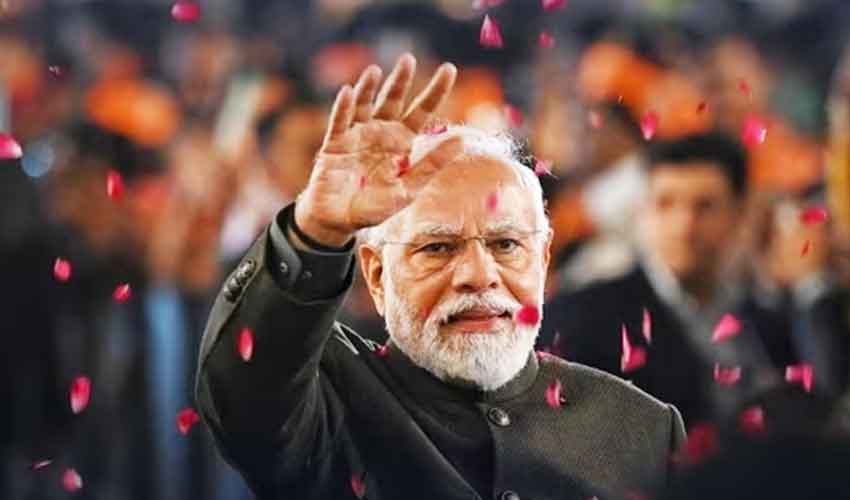Virender Singh, a manual laborer who makes a modest living from odd jobs, says Indian Prime Minister Narendra Modi’s efforts to uplift India are bigger than his constant battles to make ends meet.
Even 10 years after he first came to power, Modi’s popularity is still extremely high. He effectively positioned himself as a guardian of India’s growing importance on the world stage as well as the interests of the country’s majority religion.
More than two dozen opposition parties are campaigning together to address mounting economic woes in a bid to oust his Hindu-nationalist government in elections starting next month.
However, their campaign failed to connect with voters like Singh. Singh, who moved to the capital from small villages to compete for temporary construction jobs every morning, lives in a slum in New Delhi with other migrants.
The 31-year-old told AFP: “There are many people in the country; not everyone gets a job.”
“No matter who is in power, the poor will remain poor,” he continued. “I believe that since Modi is doing a good job, things should remain the same.
Modi, 73, rides a well-oiled campaign machine financed largely by corporate contributions; a Pew survey the previous year revealed that nearly 80% of Indians think well of him.
In January, he oversaw the construction of a controversial temple in northern India that was built on the site of a mosque destroyed by radical Hindus many years ago.
The opening of the Ram Mandir in Ayodhya was the latest milestone in the rise of strong Hindu politics in ostensibly secular India, which has left religious minorities worried about their future in the country. It was greeted enthusiastically by Hindus in street celebrations across the country, bolstering Modi’s reputation as a leading defender of their religion.
According to Nilanjan Mukhopadhyay, who wrote a biography of the prime minister, “Modi was able to convince his supporters that Hindu hegemony and suppression of minorities was more important than things like jobs.”
The opposition alliance fighting to topple the Modi government, known as INDIA or the Indian National Development Inclusive Alliance, appears to have resigned from this year’s election before a single vote was cast.
Rahul Gandhi, the party’s most famous figure, tried to garner attention by organizing two foot marches across the country to raise awareness of the problems faced by ordinary voters.
Gaurav Gogoi, a close adviser to Gandhi, told AFP that the listening tour had effectively highlighted the “bread and butter issues” of the economic woes facing much of the nation.
Yet Gandhi has already lost twice to Modi in brutal landslide victories, despite being the son, grandson and great-grandson of previous Indian prime ministers.
The 53-year-old has this time carefully avoided putting himself in the position of potential prime minister to avoid conflicts with allies who have their own ambitions to lead their country.
India’s raucous news outlets, which many feel are largely beholden to Modi’s agenda, have mostly ignored Gandhi’s campaign.
During his current tenure, Modi has overseen the launch of new high-speed rail services, the G20 summit hosted by India and the successful completion of an unmanned mission to the moon.
After decades of poverty, the media gleefully portrayed each incident as a symbol of India’s growing power and prosperity.





